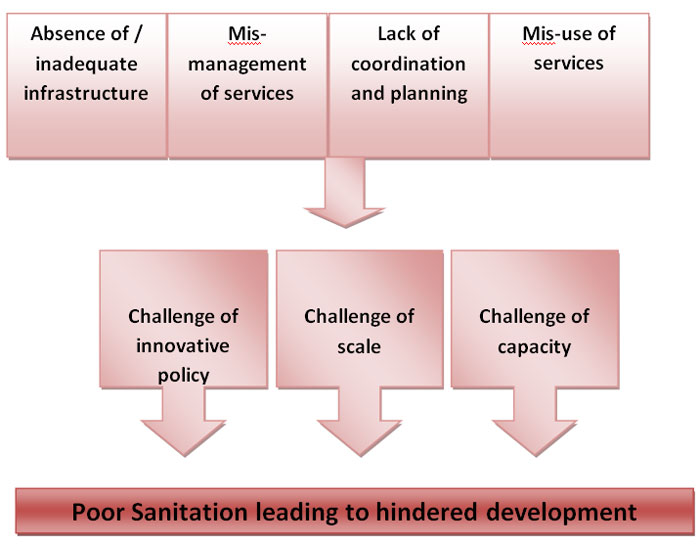Approximately, 2.5 billion people lack access to improved sanitation globally, where out of this figure, 597 million people reside in India, translating into 40% of Indians lacking access to improved sanitation . This hinders the track towards sustainable development in four key areas:
Public Health
- Lack of access to clean drinking water and inadequate sanitation have globally contributed to 88% deaths from diarrheal diseases.
- In India, an estimate of 62 million children are stunted resulting from chronic malnutrition due to lack of access to improved sanitation.
- India is associated with the second highest death rate for children (under 5 years) due to poor sanitation.
|
Gender Aspects
- Inequitable access to sanitation facilities for women and girls leading to health burdens and high crime rates.
- High percentage of health disorders due to lack of and unclean toilet facilities, lack of privacy, open defecation and long waiting time.
- In India, girls lose approximately 20% of school days due to sanitation related reasons such as lack of toilet facilities at their school or lack of awareness on how to deal with menstruation.
|
Environmental Impacts
- Existing cities in India do not have sanitation infrastructure to cater to the waste being produced, leading to contamination of the environment
- No existing system for safe disposal of waste
- Reduced ecosystem services and depreciation of land value.
- In all cities there is no system for conveyance and safe disposal of this
- waste
|
Economic Impacts
- India suffers from great economic impact, with US $106.7 billion (2015) in terms of total cost for inadequate sanitation.
- According to Indian Ministy of Health and Family Welfare, an estimate of 12 billion IN is spent annually on poor sanitationOut of this, 70% of this is mostly health related costs.
|




